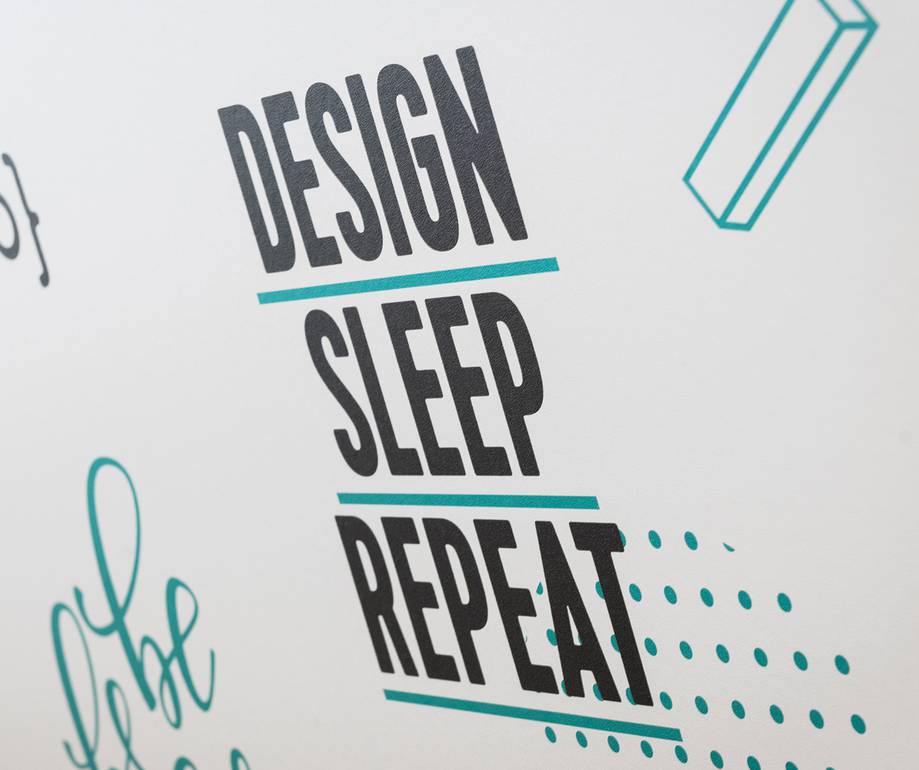So you’ve made the leap - congratulations! You’ve decided to study graphic design at art school, university, college or perhaps independently. Or, maybe you’re midway through your course, so the hard work and long nights are beginning to kick in.
Your design education will hopefully be a fantastic and unique (if a little exhausting) experience, but there will be things that your design education will not teach you.
Whilst a design degree or course provides a good starting block, in my experience, it didn’t teach me all of the critical things that would have made the (occasionally) bumpy journey to becoming a junior designer, that little bit smoother.
Your future employer’s decision to hire you won’t be influenced by which design school you went to, or the qualifications you gained. I don’t know about you but I’ve never been asked which A Levels or GCSE’s I received! It will be your skillset, personality and portfolio which will get you your dream job.
With that in mind, you want to get as much out of your design course as possible.
“How can you utilise your design education to better prepare yourself for that first job as a junior?”
We’re all still learning, it’s a continuously evolving area, so I have compiled a shortlist of 10 things that will hopefully help you to prepare yourself for your first junior design position. Take the time on your course to consider these points - maybe even ask your tutors to incorporate some of these points in to your lectures or seminars.
1. Learning to react to client feedback
For the most part, this means learning how to react fairly to criticism. I, and most designers I know, are guilty of taking criticism of our work to heart. It’s nerve racking showing clients an initial concept, letting your little design baby go out into the world to get criticised is hard. Sometimes the client will make a valid point, after all it is their business and they may have considered points which you have not. Equally, feedback will be made which you don’t agree with. It’s learning to react to both of these situations, steering the outcome in the right direction, that will strengthen you as a designer.
“Think about where the design is going, what format it needs to end up in, and who may need to edit or use your work after you.”
Key point: Use feedback or portfolio critique sessions on your course as a force for good. Don’t come away quietly resenting people who have made negative constructive comments. Consider each point before dismissing them - deep down you may know that a few of those points have a valid justification.
2. The difference between designing for print and digital
This is a big one for me, and working in a full-service (therefore multi-discipline) marketing agency, this was a huge learning curve in my first three months on the job.
There are a lot of considerations in working these two different areas - too many to list in this article. As a good starting place, consider what the output is. You might start jotting down some ideas quickly in one piece of software before realising your final output will need to be created in something different.
It’s better to realise this at the beginning of your design process, so try and get into the habit of considering this before you start.
If you are designing a web visual, it will need to be easy for a developer to take your design to build. If you are designing a large format print banner, again think about which software is most suitable for this.
3. Take the opportunity to enter as many student design competitions as you can.
I was so busy focusing on mandatory assignments and modules, that I disregarded a lot of student design competitions due to lack of time. However, when you graduate, competition opportunities become more scarce and more expensive to enter. You also no longer have the luxury of seven days to work on your submissions, so time is an issue. Take advantage of student competitions whilst you still qualify for them. There’s the added bonus that many come attached to cash prizes or work opportunities at prestigious design establishments or coveted brands. Depending on your chosen discipline, you may want to consider entering:
- D&AD New Blood Awards
- Penguin Books Student Design Award
- RSA Awards
- SBID (The Society of British and International Design) Student Design Competition
- International Society of Typographic Designers Student Competition
- Student Television Awards 2019
Key point: Design competitions will supplement your design portfolio, giving it more depth when it comes to competing for your first job. Your submission may even get you noticed by all the right people.
4. Artworking a document for print
There’s nothing quite like the fear of sending a document to print for a paying client for the first time. There will be a time in your design career where you have to send something to print, even if you work predominantly as a digital designer, and having a solid knowledge in the foundation of what it takes to prepare a document for print will be invaluable to you. If you’re unsure of how to prepare a document for print, look out for my future article which goes in to more depth about this topic.
Key point: Ensure you are confident on the steps for preparing a document for print. If you don’t know - ask your tutor to go through it with your class - your classmates will thank you for it. After all, no one wants to be the junior designer who messes up a big print deadline!
5. Do you need ‘THE’ big idea?
This I’m sure sounds controversial, especially to a design student - but commercially, your idea doesn’t have to be ‘the’ most unique idea ever created. Of course there is a need to produce strong and creative ideas which fit a brief, but there was a big pressure throughout my design education for each brief to be the best, most unique ‘out-there’ idea every time.
“Mentally, this is exhausting and opens you up to constant comparison amongst your peers, which does little to nurture your creative soul - ‘Comparison is the thief of joy’ said Roosevelt; he had a point!”
You are also allowed the time to be very self-indulgent with your projects while you study and in employment, it is unlikely you’ll have enough protected time to come up with the ‘mother of all ideas’.
Key point: In the industry, you won’t have four weeks to come up with ‘THE’ best idea. You have to work with the time you have and produce the best outcome and idea you can in the time given.
If your design idea is well executed to a high standard, has solid justification and achieves the desired outcome for the client, then it has succeeded.
That's all for now! Keep an eye out on our insights page for the next installment of this mini-series.
Fancy a good ol' chat about the values of marketing to your business?
Drop Us a LinePost by
Project



